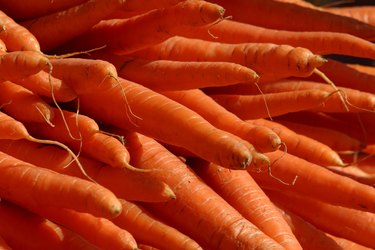
Plants and vegetables can be used for more than eating or ornamentation; they can also be used as dye. Learn to dye your own clothes with natural ingredients found in your own backyard. Some of the plants can be used to color your hair, as well. According to the Natural Moms website, you can give your locks a new color with natural ingredients, instead of using harsh chemicals.
Orange
Video of the Day
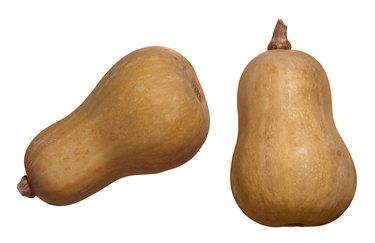
Use carrots, butternut squash or giant coreopsis for a natural source of orange dye. Barberry and lilac twigs render a yellow-golden orange color. Use bloodroot to used to make a red-orange dye.
Video of the Day
Brown

For light tan colors, use oak bark or Colorado fir. Broom bark, fennel flowers and leaves, and ivy twigs turn fabric to a yellow-brown color. If you prefer a red-brown color, use wild plum root or red leaf buds. Dandelion roots, walnut hulls, white birch bark, beets and coffee grounds can turn both fabric and hair deep brown.
Pink
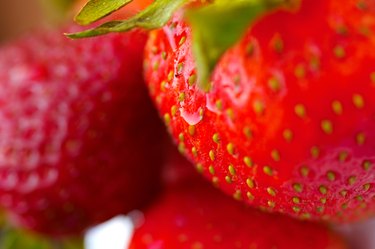
Although natural shades of pink are difficult to accomplish on hair, fabric can be dyed different shades of pink using strawberries, cherries, red raspberries, lichens and Grand Fir bark. For magenta, combine camellia with lemon juice and salt to create a brilliant color. Roses, lavender, mint and lemon juice produce a bright, pink dye. Red can be made using sumac fruit, dandelion roots, rose hips, chokecherries, beets, dried hibiscus and brazilwood.
Blue
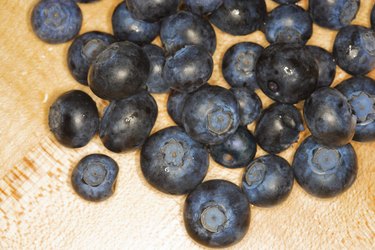
For true blue, use blueberries, cornflower petals, the petals from hyacinths or Japanese indigo. Saffron petals and dogwood fruit produce a blue-green, whereas mulberries produce a royal blue. For shades of purple, use elderberries for lavender, and blackberries for a deep, dark purple. Grapes, red-cedar root and red-maple bark will render purple. For a blue-purple, use raspberries, black iris or the Oregon grape.
Green
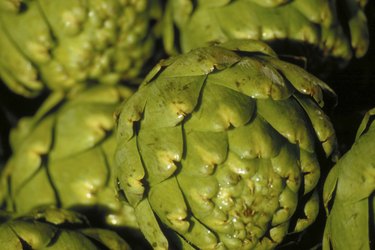
A number of plants and vegetables can turn both fabric and hair shades of green. For plain green use artichokes, spinach leaves, lilac flowers, snapdragon flowers or coneflowers. Pigweed, grass, barberry root and peach leaves make a yellow-green color. For a light, apple green, choose foxglove flowers, lily-of-the-valley and the skins from red onions.
Yellow
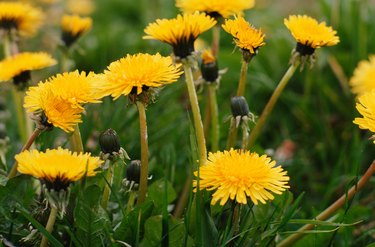
Although achieving blonde with natural dyes is difficult, fabrics can easily be dyed yellow. Safflower, alfalfa seeds, marigold flowers, heather, sumac bark, dandelion flowers, turmeric spice and sunflowers all make yellow dyes. For shades of gold, use red clover, St. John's wort, paprika or flowers from dahlias.